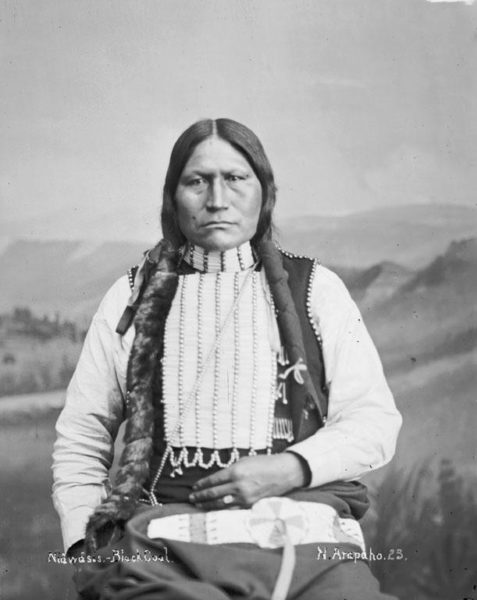
- Details
- By Native News Online Staff
RIVERTON, Wyo. — The Northern Arapaho Tribe will hold a celebration on Saturday, February 1st at the Great Plains Hall at Arapahoe to welcome home the headdress of Chief Black Coal, according to the Tribe’s Facebook page.
One of the most influential Arapaho leaders of the 19th century, Chief Black Coal’s 140-year old headdress is being donated by a Massachusetts family.
Wyoming Public Media has the story of how the headdress made its way home to the Northern Arapaho nation, as well as other recent victories for the Northern Arapaho Tribal Historic Preservation Office. In 2014, then-director Yufna Soldier Wolf led the charge in repatriating the remains of two Arapaho boys who died at a government boarding school in the late 1800s. Devin Oldman succeeded last year in bringing a small herd of buffalo to Northern Arapaho land for the first time in 130 years, according to the Wyomning Public Media report.
More Stories Like This
Vision Maker Media Honors MacDonald Siblings With 2025 Frank Blythe AwardFirst Tribally Owned Gallery in Tulsa Debuts ‘Mvskokvlke: Road of Strength’
Zuni Youth Enrichment Project and Partners at Ho’n A:wan Productions Launch 8th Annual Delapna:we Project
Chickasaw Holiday Art Market Returns to Sulphur on Dec. 6
Center for Native Futures Hosts Third Mound Summit on Contemporary Native Arts
Help us defend tribal sovereignty.
At Native News Online, our mission is rooted in telling the stories that strengthen sovereignty and uplift Indigenous voices — not just at year’s end, but every single day.
Because of your generosity last year, we were able to keep our reporters on the ground in tribal communities, at national gatherings and in the halls of Congress — covering the issues that matter most to Indian Country: sovereignty, culture, education, health and economic opportunity.
That support sustained us through a tough year in 2025. Now, as we look to the year ahead, we need your help right now to ensure warrior journalism remains strong — reporting that defends tribal sovereignty, amplifies Native truth, and holds power accountable.
 The stakes couldn't be higher. Your support keeps Native voices heard, Native stories told and Native sovereignty defended.
The stakes couldn't be higher. Your support keeps Native voices heard, Native stories told and Native sovereignty defended.
Stand with Warrior Journalism today.
Levi Rickert (Potawatomi), Editor & Publisher

